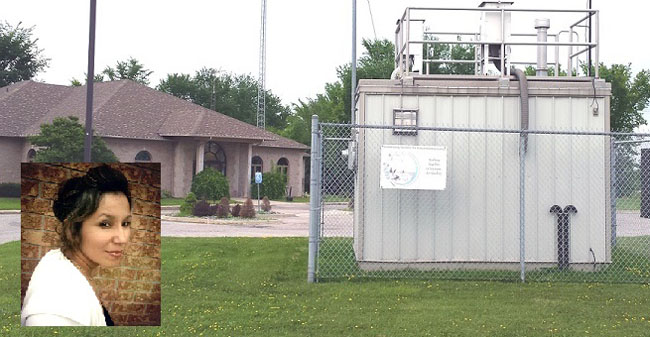Aamjiwnaang Air Quality Station data released

By Greg Plain
AAMJIWNAANG FIRST NATION –At the corner of Tashmoo Ave and Lasalle Rd in front of the Aamjiwnaang Health Centre sits a state of the art Air quality monitoring station. This unit was installed on September 2008 and has been collected air quality data every day since then. With the monitoring station and full monitors the station is worth over $200,000 in equipment. The cost of analysis of canisters and filters for one year are additional fees.
The Ministry of the Environment has now done analysis on the data with attention to making people aware of what is in the air and the releases from chemical plants that surround the area. The data is over a five-year period ending September 2013, and came to the community to tell the Aamjiwnaang membership what it has found.
Sharilyn Johnston is the Environmental Coordinator for the Aamjiwnaang First Nation stated “the report indicated Air Quality is improving over time with a few exceptions, however there is more that can be done to reduce the levels of the priority contaminates.”
Approximately 25 people were in attendance but were mainly Health Canada and Ontario Ministry of Environment staff, approximately six were from the Aamjiwnaang membership including staff members.
Marina Plain is the Environment Committee Chairperson, and had several questions of the Air Monitor Report at the meeting.
“I would like to see the Ministry of Environment and Climate Change review their air monitor analysis,” said Plain. “Specifically effects on human health with Ministry of Health and the Aamjiwnaang Environment department. I support their ideas to improve communication, although I will go one step further to recommend that all parties keep the process transparent as possible. My hope is that the findings are shared with all former and current residents affected by cumulative effects of all 188 emission sources the monitor at our local station.”
The trends were summarized from the five years of data collection, the trends in air contaminants levels and exceedance of benchmark concentrations are highlighted in the report. Across the country the ozone levels have been on the increase and such was the case with the Aamjiwnaang region with 12 exceedances in 2013 data. This type of occurrence leads to the alerts for poor air quality during each of the summer months.
In addition to the ozone there were several occurrences noted for Sulphur Dioxide, and Volatile Organic Compounds like Benzene and butadiene that would be emitted from local chemical plants that surround the Aamjiwnaang Nation.
The Aamjiwnaang Air Quality report and PowerPoint presentation can be seen on the Aamjiwnaang Environmental website (www. aamjiwnaangenvironment.ca)
From the collection of data across Ontario at 40 different stations the Ministry of environment has a new Air Quality Health Index that they rolled out on June 25, 2015 The AQHI is scale that is designed to help you understand what the air quality around you means to your health (www.airqualityontario.com/science/aqhi_description.php).

